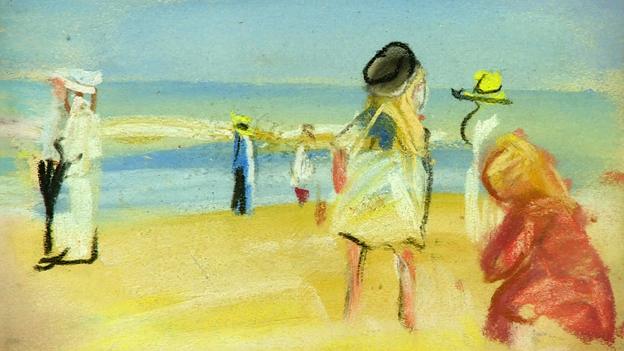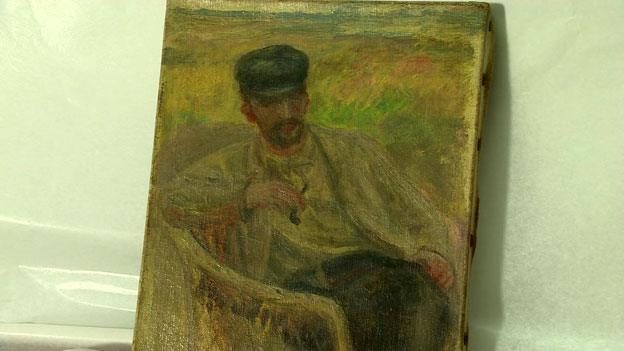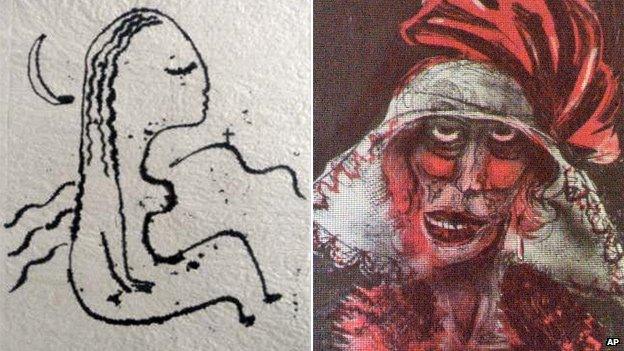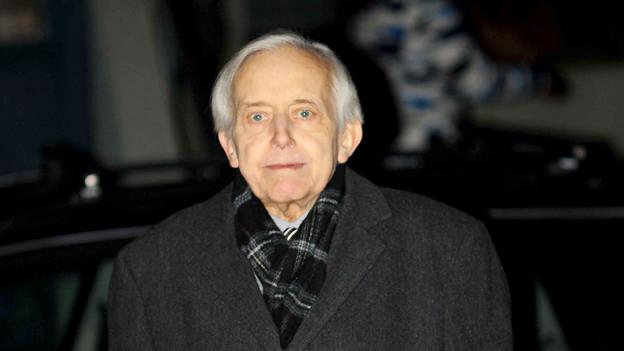'Nazi art' hoarder Cornelius Gurlitt, 81, dies
- Published
More than 1,400 works were found in Cornelius Gurlitt's Munich apartment
German art hoarder Cornelius Gurlitt has died aged 81, with no definitive answer on what will happen to his secret collection, which included many Nazi-looted pieces.
More than 1,400 works were found in his Munich apartment, including pieces by Picasso and Matisse.
Many were feared lost or destroyed before tax investigators uncovered his priceless collection in 2012.
Cornelius Gurlitt was the son of Adolf Hitler's art dealer.
Hildebrand Gurlitt was ordered to deal in works that had been seized from Jews, or which the Nazis considered "degenerate" and had removed from German museums.

A beach scene by German impressionist Max Liebermann was one of the important discoveries

Matisse's Femme Assise is the subject of an ownership claim

The hoard of paintings includes Pierre-Auguste Renoir's Man Seated
Mr Gurlitt, whose death followed ill-health after heart surgery, told Der Spiegel magazine last November that he would never willingly give up the paintings.
"I haven't loved anything more than my pictures in my life," he said.
But he changed his position, agreeing to co-operate with the German authorities on establishing the paintings' provenance, and returning them if they were shown to be stolen.
German Culture Minister Monika Gruetters praised him for that, saying: "He will be rightly recognised and respected for taking this step."
Wads of cash
Mr Gurlitt died "in his apartment in Schwabing, in the presence of a doctor," spokesman Stephan Holzinger said in a statement.
Mr Gurlitt did not live an extravagant life but would sell a painting only when he needed money.
His collection only came to light after a routine check found he was carrying wads of cash on a train from Switzerland, triggering a tax inquiry.
Investigators found more than 1,400 works in his flat in Munich in February 2012 - though they only revealed the discovery in late 2013 - and a further 60 in his house near Salzburg, Austria, earlier this year.
Among them were works by Pierre-Auguste Renoir, Marc Chagall, Emil Nolde and Max Liebermann.
The collection is estimated to be worth up to a billion euros (£850m; $1.35bn).
Under German law, Cornelius Gurlitt was not compelled to return any paintings to their owners, as he was protected by a statute of limitations, which negates any claim for incidents that happened more than 30 years ago.
Even if it was proved the works were looted by the Nazis, Mr Gurlitt could have kept them, the BBC's arts editor Will Gompertz says.
But his death will certainly have ramifications for the case.
Mr Gurlitt's secretive nature means little is known of his private life or any possible heirs.
And the Bavarian authorities' slow, bureaucratic response to the discovery thus far would suggest that a rapid resolution of outstanding claims is unlikely, our editor adds.
The BBC's Stephen Evans was granted exclusive access to look at some of the long-lost masterpieces in 2014
- Published7 April 2014

- Published26 March 2014

- Published5 November 2013
- Published5 November 2013
